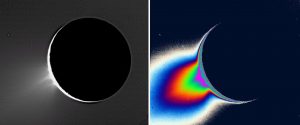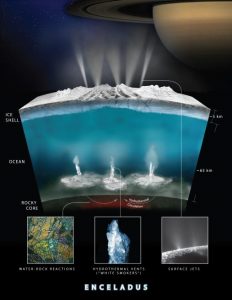
Washington, Apr 13 (EFE).- NASA on Thursday confirmed the discovery of hydrogen on Enceladus, one of Saturn’s moons, a circumstance that could mean there are living organisms there.
The hydrogen found in the icy plumes erupting from the moon’s surface have almost all the necessary ingredients to support life on Earth, said Linda Spilker, one of the scientists working with the unmanned Cassini mission, which has been orbiting Saturn since 2004, said at a press conference.
The paper by researchers with the Cassini mission, published Thursday in Science magazine, says that the hydrogen gas – which could potentially provide a source of chemical energy for the existence of life – is found in Enceladus’ frozen ocean.
The presence of hydrogen in the ocean on this moon of Saturn means that microbes – if they exist there – could use it to obtain energy by combining it with carbon dioxide dissolved in the water there, scientists said.

This chemical reaction, known as “metanogenesis,” is a form of anaerobic respiration and is one of the steps in the development of life on Earth billions of years ago.
This is the closest scientists have come to identifying a place having the ingredients for life, said Thomas Zurbuchen, the associate administrator of the NASA Science Mission Directorate.
The Cassini probe – a joint project of NASA, the European Space Agency and Italy’s ASI space agency – will now undergo a course correction to enable it to study Saturn’s rings before being plunged into the gas giant’s atmosphere in September, ending its 13-year mission to explore the distant planet and its 62 known moons.
The moon Enceladus is just 502 kilometers (311 miles) in diameter and has an icy surface, a rocky interior and an ocean of liquid water sandwiched between the two.
Molecular hydrogen was detected in the ice plumes erupting from the moon’s surface in October 2015 when Cassini passed through the plumes, skimming just 49 kilometers (30 miles) above the moon’s surface collecting samples.
